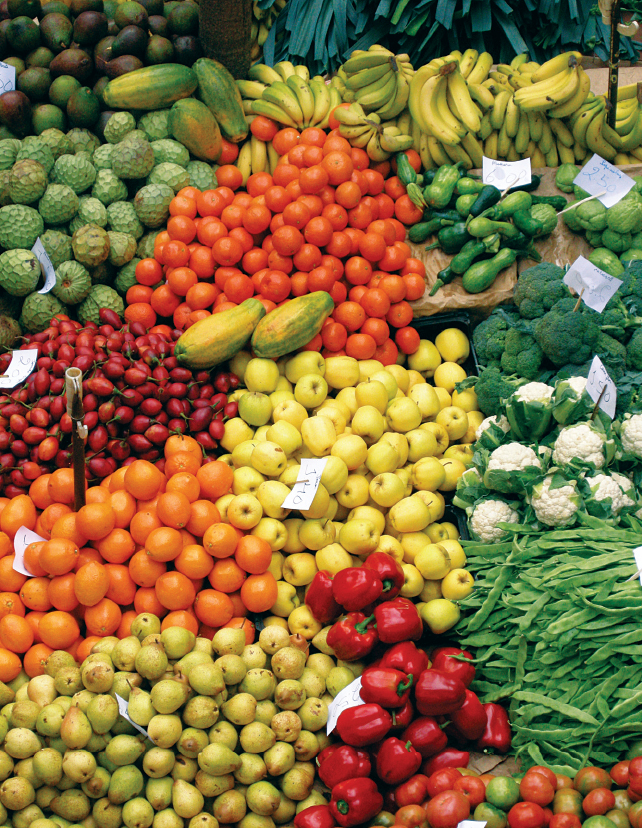Writing Quick Start: Explaining Categories and Parts
17
Classification and Division
Explaining Categories and Parts
IN THIS CHAPTER YOU WILL LEARN TO
- understand the purpose and function of classification and division essays,
- use graphic organizers to visualize classification and division essays,
- integrate division and classification into an essay,
- read and think critically about division and classification, and
- plan, organize, draft, revise, and edit essays using division and classification.
WRITING QUICK START
T
he photograph on this page shows fruits and vegetables on display at a farmers’ market. Notice that they are arranged by produce type. Can you imagine how difficult it would be to find what you need if all produce were randomly piled onto a table or shelf, with broccoli, pears, peppers, and bananas all mixed together? Most stores and markets group their products for the convenience of their customers.

Take a few minutes to brainstorm other ways a favorite store or Web site could group its products for customer convenience. You may propose a serious method or a humorous one. Then write a paragraph describing your system. List the characteristics of each product group, describe the products that belong in each group, and give each group a title.
Classification is a process of sorting people, things, or ideas into groups or categories to make them more understandable. You use classification daily, the same way you did in the Writing Quick Start. Your dresser drawers are probably organized by categories, with socks and sweaters in different drawers. Grocery stores, shopping Web sites, libraries, and even restaurant menus arrange items in groups according to similar characteristics.
Division breaks one item down into parts. For example, the humanities department at your college may be divided into English, modern languages, and philosophy, and the modern language courses might be divided into Spanish, French, Chinese, Italian, and Russian.
USING CLASSIFICATION AND DIVISION IN COLLEGE AND THE WORKPLACE | |
|
|